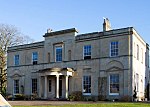Lulsgate Aerodrome
English sports venue stubsMotorsport venue stubsMotorsport venues in EnglandWrington

Lulsgate Aerodrome was a motor racing circuit at the former RAF Lulsgate Bottom airfield, which in 1957 subsequently became Bristol Airport. The airfield was turned into a racing circuit in 1949. Lulsgate hosted two race meetings, in 1949 and 1950. The circuit mainly hosted sports car events, however a Formula III race featured in both 1949 and 1950.
Excerpt from the Wikipedia article Lulsgate Aerodrome (License: CC BY-SA 3.0, Authors, Images).Lulsgate Aerodrome
Perimeter Road,
Geographical coordinates (GPS) Address Nearby Places Show on map
Geographical coordinates (GPS)
| Latitude | Longitude |
|---|---|
| N 51.3823 ° | E -2.7123 ° |
Address
Perimeter Road
BS48 3DJ
England, United Kingdom
Open on Google Maps










